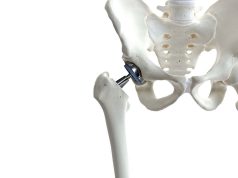The American Association of Neurological Surgeons 83rd Annual Scientific Meeting
The annual meeting of the American Association of Neurological Surgeons was held from May 2 to 6 in Washington, D.C., and attracted more than 7,000 participants from around the world, including neurosurgeons, neurosurgical residents, medical students, neuroscience nurses, clinical specialists, physician assistants, and allied health professionals. The conference highlighted recent advances in neurological surgery, with presentations focusing on the prevention, management, and rehabilitation of nervous system disorders, including disorders of the spinal column, spinal cord, brain, and peripheral nerves.
In one study, Deborah C. Marshall, of the University of California in San Diego, and colleagues retrospectively analyzed outcomes of 801 patients with 3,683 brain metastases from primary breast, colorectal, lung, melanoma, and renal cancers. The investigators compared the survival of 643 patients who underwent a single round of stereotactic radiosurgery to 158 patients who underwent multiple rounds of stereotactic radiosurgery for subsequent brain metastases.
“We found no significant difference in median overall survival for patients with brain metastases undergoing one, two, three, or greater than or equal to four rounds of stereotactic radiosurgery,” Marshall said. “Median intervals between treatments consistently ranged from 140 to 178 days irrespective of rounds of stereotactic radiosurgery.”
The investigators also found that patients who underwent less than one round of stereotactic radiosurgery tended to be younger, with systemic disease control, harbor lower cumulative tumor volume but increased number of metastases, and have melanoma.
“For judiciously selected patients, median overall survival was comparable for brain metastases patients who underwent single or multiple rounds of stereotactic radiosurgery,” Marshall said.
In another study, Teresa Purzner, M.D., of the University of Toronto, and colleagues used a mass spectrometry-based approach to identify kinases driving multiple phosphorylation events in cancer signaling pathways.
“When drugs were used to target one of these key kinases, named CK2, we demonstrated significant regression of the tumor. As a result, we are now developing a CK2 inhibitor for use in children with medulloblastoma,” Purzner said. “The mass spectrometry-based approach we have used in this study was effective at identifying important and novel kinases in cancer signaling pathways. We hope that we, and others, will continue to use this approach to develop novel targeted therapies.”
Michael Zhang, a medical student at the Stanford University School of Medicine in California, and colleagues found that M1 macrophages showed superior phagocytic response against glioblastoma multiforme, the most aggressive type of brain malignancy.
According to the AANS press release: “Results of the research indicate that in vitro disruption of the CD47-SIRPa signal induced a response from both M1 and M2 macrophages; however, the rate and responsiveness of phagocytosis by M1 macrophages was consistently greater. In addition, phenotypic evaluation of local macrophages surrounding transplanted glioblastoma multiforme tissue in mice suggests that anti-CD47 treatment promotes a larger local M1 population.”
AANS: Surgeon Volume Affects Costs in Pituitary Tumor Care
WEDNESDAY, May 6, 2015 (HealthDay News) — For patients with transsphenoidal pituitary tumors, hospital charges, costs, and length of stay are increased with lower-volume surgeons, according to a study presented at the annual meeting of the American Association of Neurological Surgeons, held from May 2 to 6 in Washington, D.C.
AANS: Pre-Op Working Status Predicts Return-to-Work
TUESDAY, May 5, 2015 (HealthDay News) — For patients undergoing single-level lumbar discectomy, preoperative working status is the strongest predictor of return to work at three months, according to a study presented at the annual meeting of the American Association of Neurological Surgeons (AANS), held from May 2 to 6 in Washington, D.C.
AANS: Three-Month Spine Surgery Outcomes Not Predictive
TUESDAY, May 5, 2015 (HealthDay News) — For patients undergoing lumbar spine surgery for degenerative disease, patient-reported measures of treatment effectiveness obtained at three months correlate with, but do not reliably predict, 12-month measures, according to a study presented at the annual meeting of the American Association of Neurological Surgeons (AANS), held from May 2 to 6 in Washington, D.C.
Copyright © 2015 HealthDay. All rights reserved.







